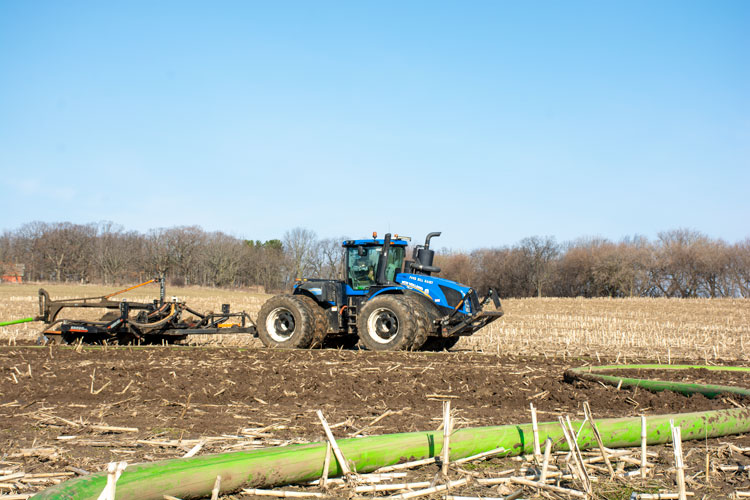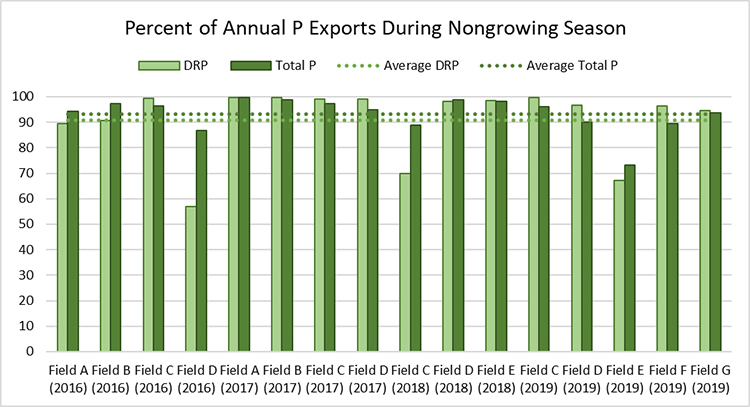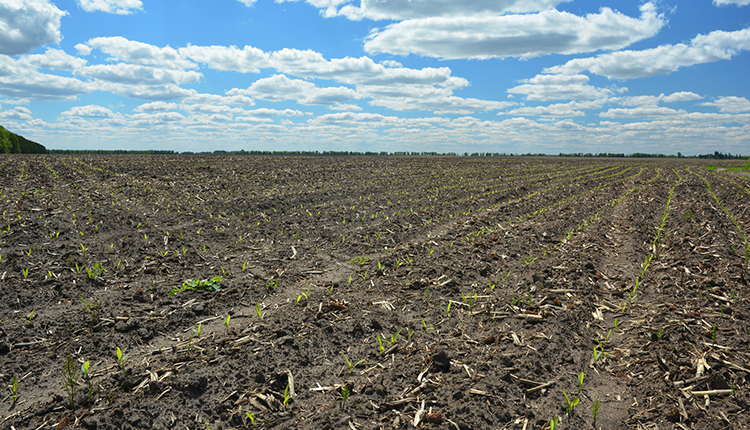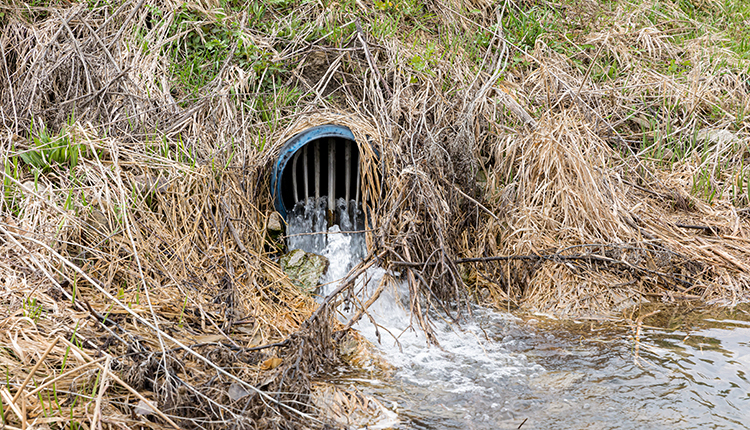
Nongrowing season is a critical period for managing phosphorus losses in runoff. With that in mind, edge-of-field runoff monitoring studies at Miner Institute near Chazy, N.Y., over the past five years have focused on determining the efficacy of different management strategies on Northern dairy farms in maximizing nutrient retention in the field. Despite varying field characteristics, management practices, and annual weather patterns, the one constant across the various trials is that the majority of phosphorus (P) losses occurs during the nongrowing season between October 15 and April 15.
The figure illustrates the percentage of annual P exports that were lost in surface runoff and tile drainage during the nongrowing season across seven research sites, with 1 to 4 years of monitoring data per site. Consider Fields C and D, the two fields with data across all four years. These fields were disk-tilled and planted with corn for silage in the spring with a banded P starter fertilizer, left fallow following corn harvest, and received fall disk tillage-incorporated manure applications.

While precipitation during the nongrowing season varied between 46% and 54% of the annual total, 67% to 91% of the total annual flow (surface plus tile) from Fields C and D occurred during the same period. With the elevated surface and subsurface drainage rates and no crop to remove nutrients from the soil profile, an average of 95% and 93% of the annual total P losses from Fields C and D, respectively, occurred during the nongrowing seasons.
Spring preferred overall
This pattern is common in humid, Northern regions with short growing seasons and cold, wet winters. That makes management strategies designed to target these periods even more essential. While spring manure application is preferable and results in lower risk of P losses through improved timing of nutrient delivery with crop utilization, fall applications are necessary on many Northern dairies to ensure adequate storage in manure containment systems for the winter.
When fall manure applications are unavoidable, completing those applications as early as possible will help reduce the risk of losses by lengthening the gap between application and periods of elevated runoff. Incorporating manure by injection or tillage will promote the retention of P by soil particles, reducing the availability of P to runoff.
Bringing winter-hardy cover crops into the system can utilize manure nutrients for crop growth, and the vegetative cover can reduce surface runoff and erosion rates. Shorter-day corn varieties could provide additional flexibility and ensure that corn harvest, manure applications, and cover crop planting are all accomplished before the weather turns.








